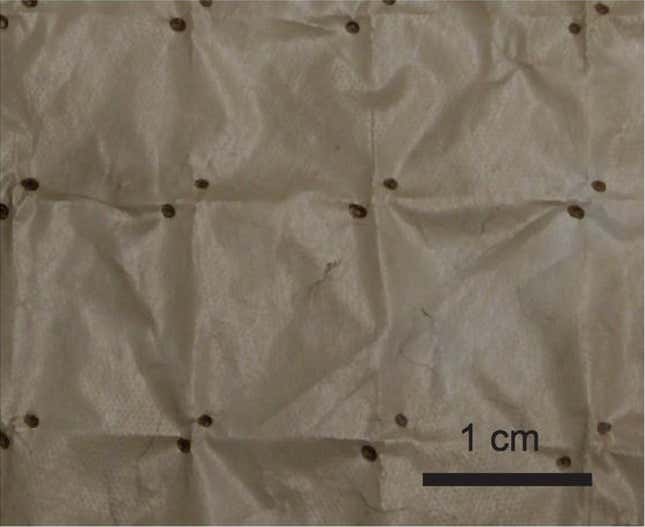As the planet keeps warming, more and more people are turning to air conditioning to fight the heat. That’s already putting a major strain on energy resources. But a team of scientists is working on a new option to keep comfortable in sweltering conditions.
In a paper published in Science Sep. 1, the team, led by Stanford University researcher Yi Cui, unveiled an innovative textile made of plastic that isn’t too far off from common plastic wrap. The main difference is they engineered theirs to be breathable, which means you can wear it without your body suffocating. And because it’s plastic, the material offers something clothing fabrics don’t: the ability to let body heat escape as infrared light.
When your body gets hot, it sweats, allowing heat to dissipate as the sweat evaporates. Many fabrics are “breathable” to different degrees, meaning they allow moisture, including that evaporated sweat, to escape. Wicking fabrics work by actively drawing the moisture away from the skin. But your body also radiates heat in the form of infrared light—think of how you’d look through an infrared camera. It remains trapped by your clothes, and in turn keeps you feeling hot.
Polyethylene, the material used to make plastic wrap, lets infrared radiation pass right through, but it’s also transparent and holds in moisture.
So the scientists engineered a version, called nanoPE, with a porous nanostructure that maintains infrared permeability but makes it opaque (so you can actually wear it in public), and then treated it to make it breathable as well. When they tested it, they found it kept the surface of a body-heat simulator nearly three degrees Celsius (about a 4.25 degree change in Fahrenheit) and almost the same temperature as bare skin.

The fabric is still experimental, but Cui told The Washington Post (paywall) that they hope to begin marketing it in a few years. They’re still figuring out how to make it cost-effective at scale, and another challenge right now is its look and feel. Most fabrics are woven from fibers, which gives them texture and depth. NanoPE is flat, which can feel odd. The team is now testing a version woven from individual fibers to see if it maintains the same properties.
The researchers believe it could genuinely help cut down on the vast amounts of energy used to cool buildings. ”We thought, why not cool the bodies instead?” Cui told The Post. A separate op-ed in Science by an MIT scientist who wasn’t involved in the project supported the idea that nanoporous fabrics could lead to significant energy savings.
Meanwhile, other experiments with cool clothes are underway. Designer Phoebe Heess, who has previously been credited with creating the blackest material known, has a new black fabric that she says uses a nanotechnology coating to keep it from heating up in the sun. Soon all black everything could be no problem even on the hottest summer day.
